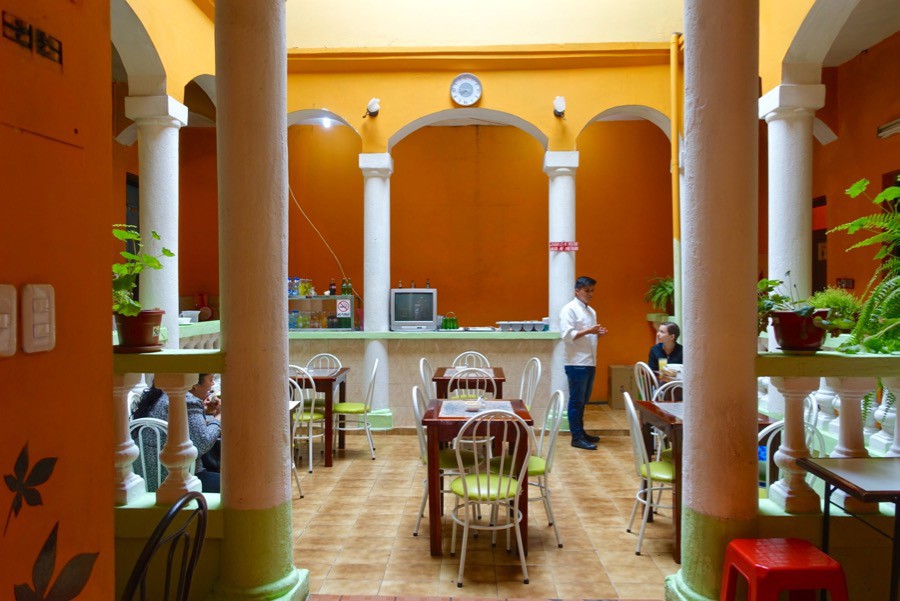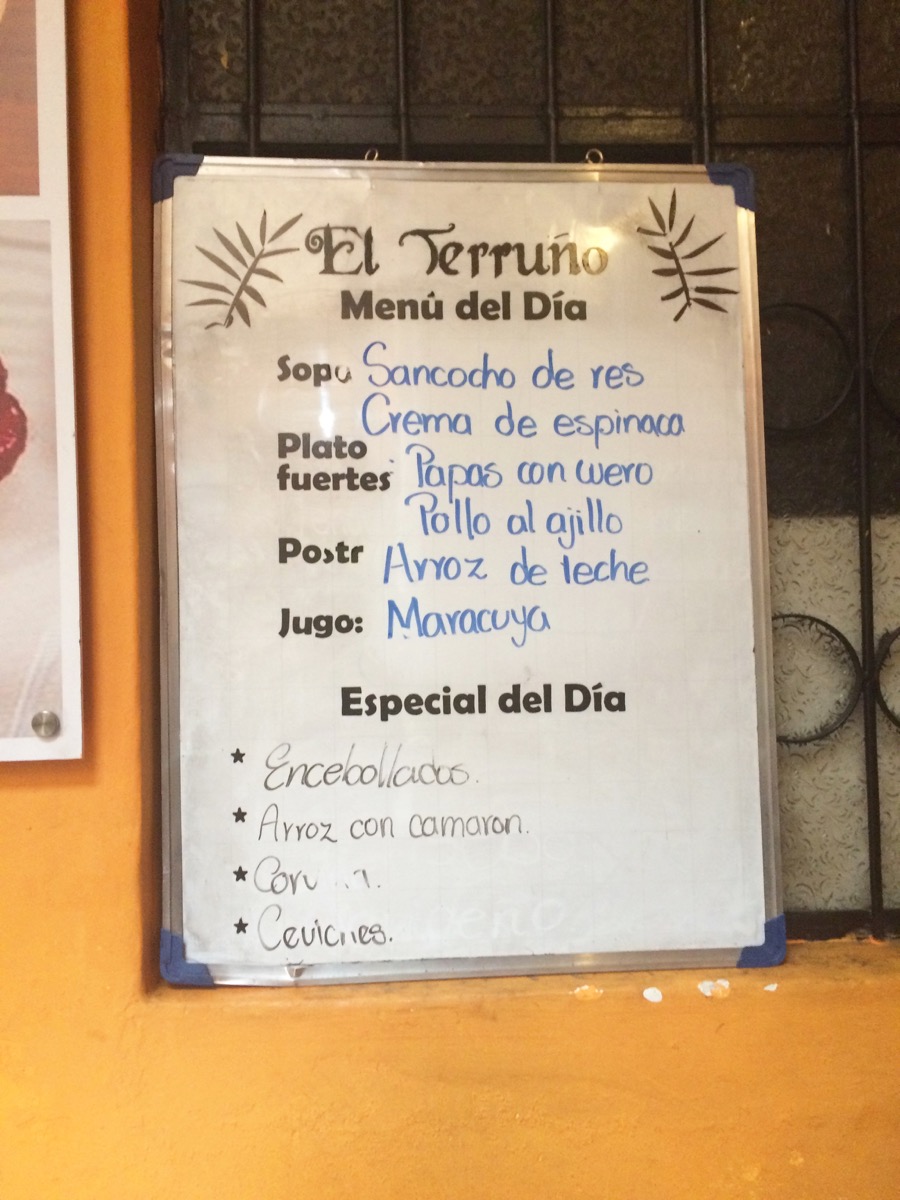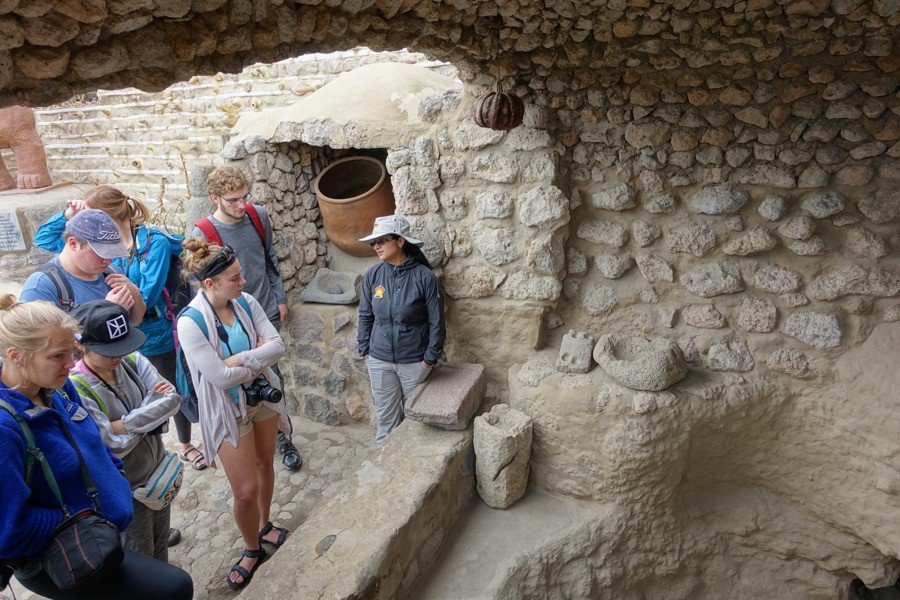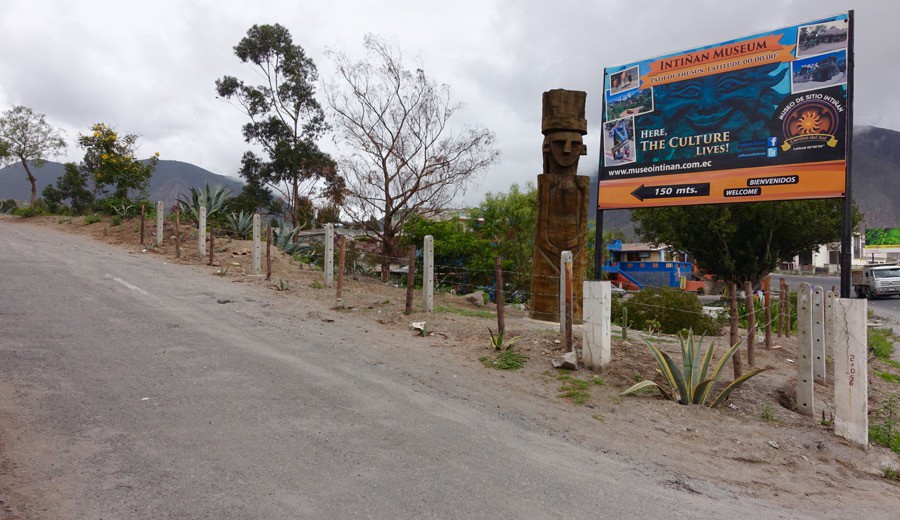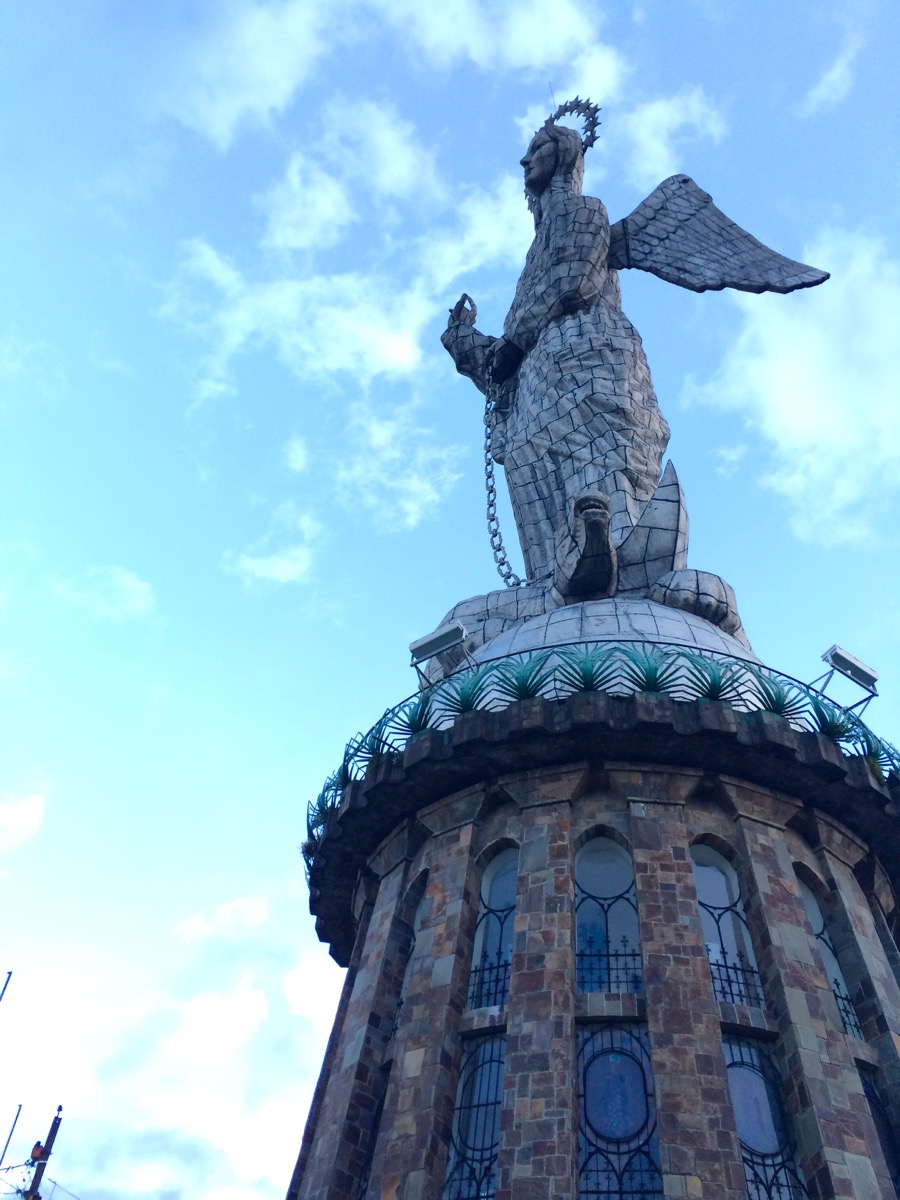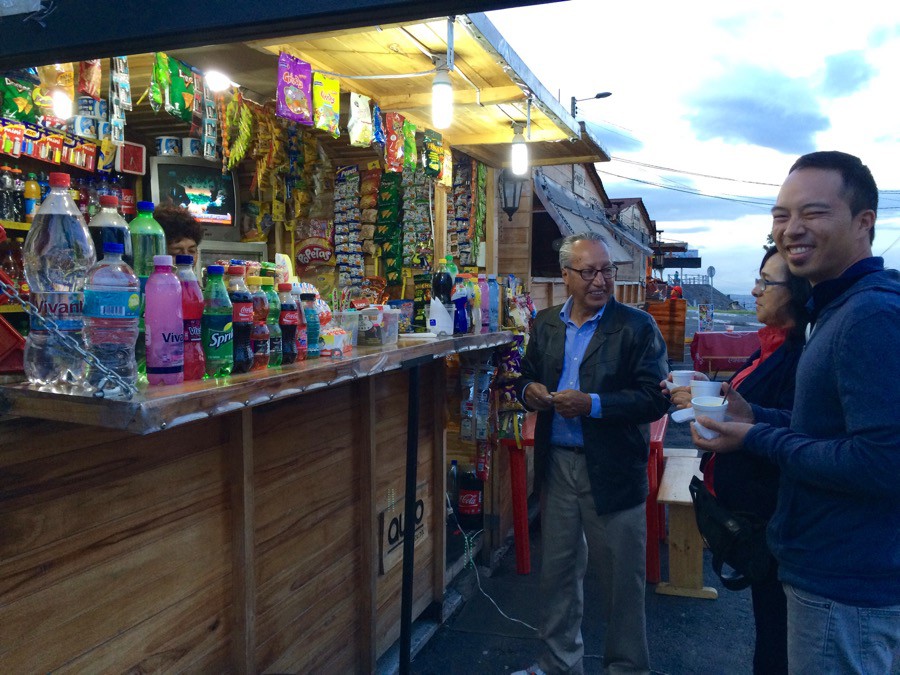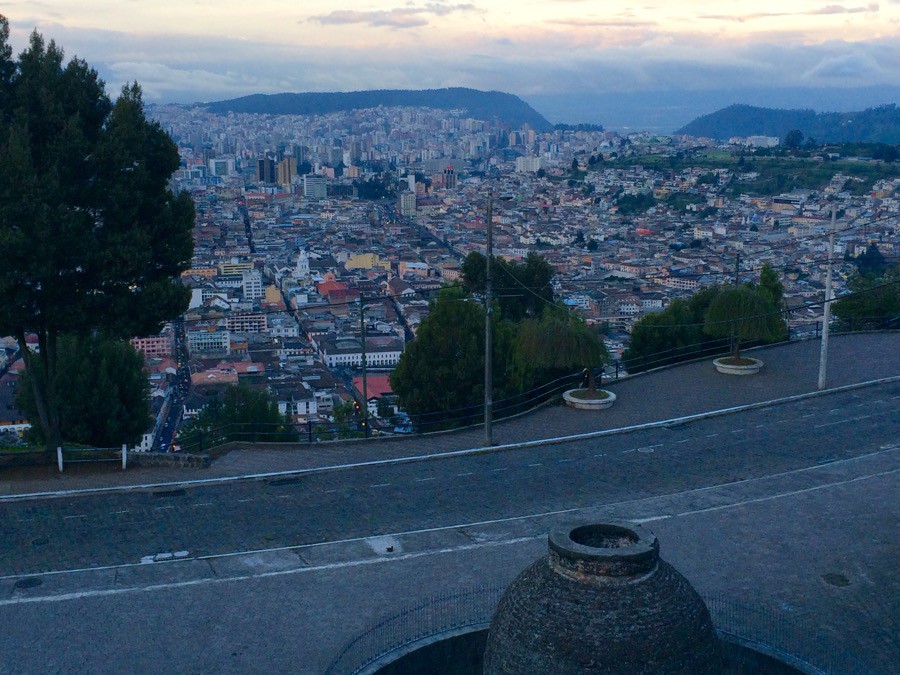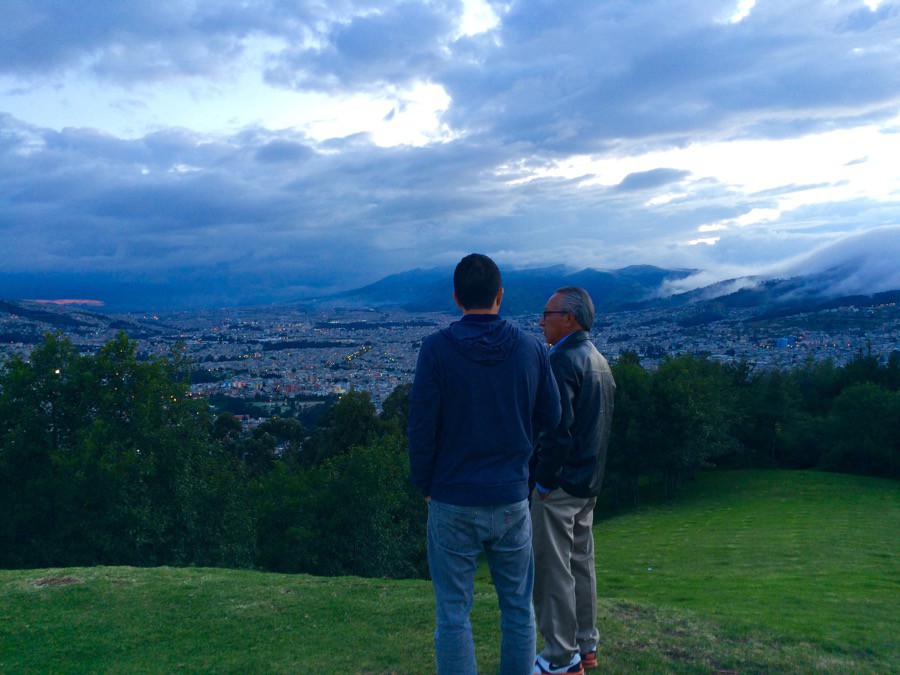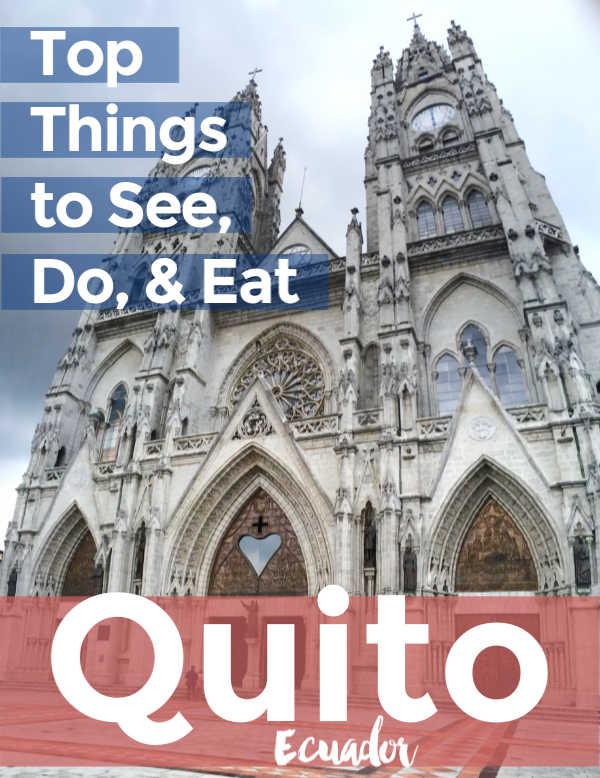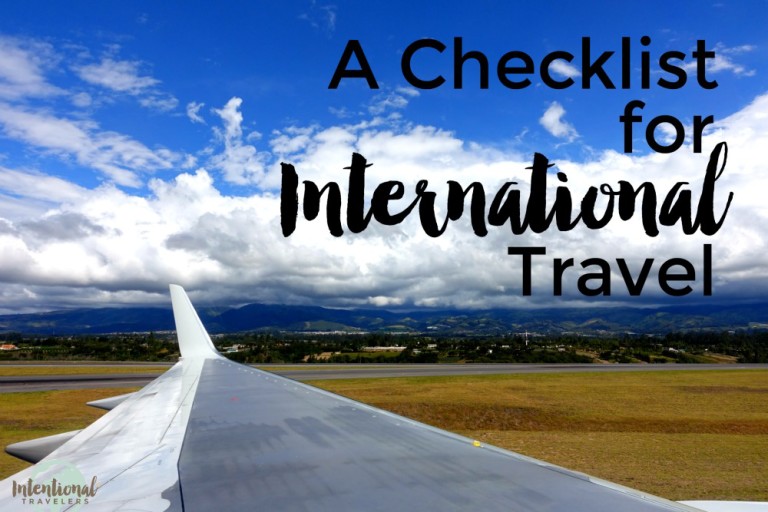Top Things You Must See and Do in Quito, Ecuador
As one of the first UNESCO World Cultural Heritage sites in the world, with the outskirts of the city extending about a kilometer away from the equator, Quito, Ecuador is a very special city.
As soon as you arrive, you’ll be captivated by this expansive capital city, built on the sides of dramatic mountains and plunging valleys.
Read on for the top things to see, do, and eat on your visit to Quito.
Last updated: 2023 (and in 2020 with help from Deb Pati of The Visa Project). Originally published: Spring 2016.
Disclosure: This post contains affiliate links. If you make a purchase through our links, we may receive a small commission, at no additional cost to you.
Table of Contents
Visiting Quito, Ecuador
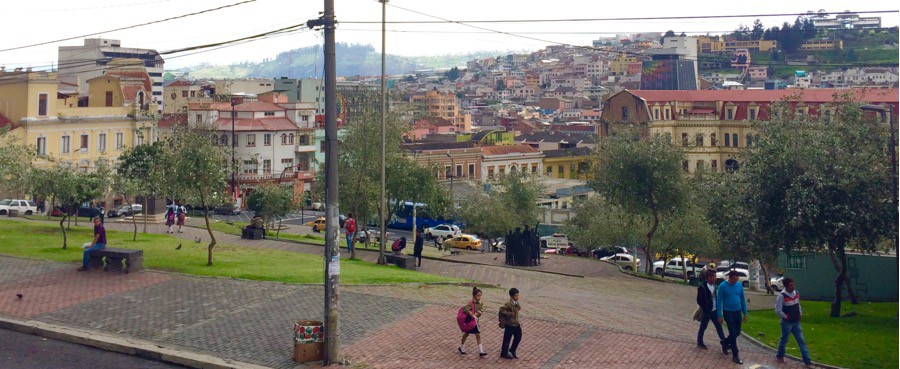
On our first trip to Ecuador, we landed in Quito and stayed several nights with the family of Michelle’s former classmate. They were wonderful hosts, introducing us to some traditional Ecuadorian meals and helping us get acquainted with life and travel in Ecuador.
About the altitude in Quito
The red-eye flight may have played a role, but we certainly felt the elevation soon after arriving. Quito is 9,350 feet above sea level.
We are relatively fit but the first morning, we were unusually fatigued and occasionally a bit light-headed. We took it easy the first couple days and had no problem walking around town.
When we returned to fly out of Quito about seven weeks later, we felt great and were able to power walk up hills without losing our breath!
If you’re concerned about altitude sickness, read up on the CDC’s High Elevation recommendations, including medicine you can pack. Above all, stay hydrated and take it easy the first couple days.
What to See and Do in Quito
As promised, we’ll share some of our favorite parts of visiting Quito. We learned about these top things to do in Quito from our Ecuadorian hosts.
Quito’s Centro Historico
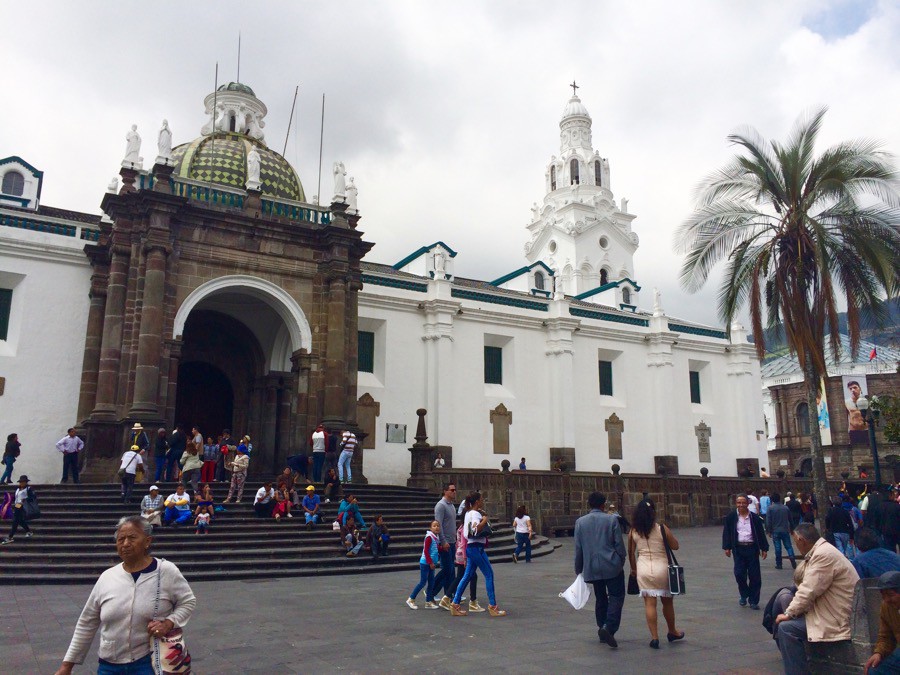
Visiting the historic center of Quito is an absolute must. This was one of the first World Heritage sites designated by UNESCO!
The main square is called Plaza de la Independencia (or Plaza Grande). It’s surrounded by well-preserved colonial architecture, dozens of churches, restaurants and more. You could spend several hours walking around and taking it in.
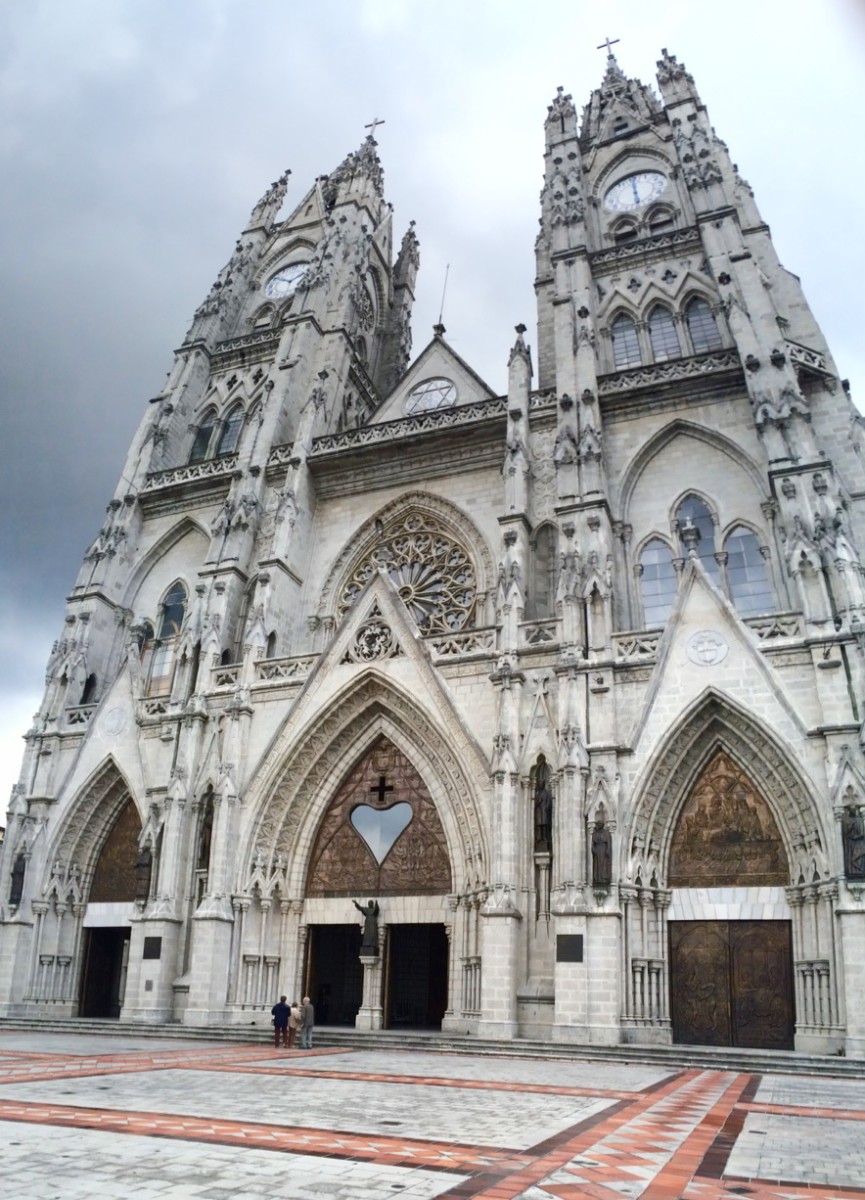
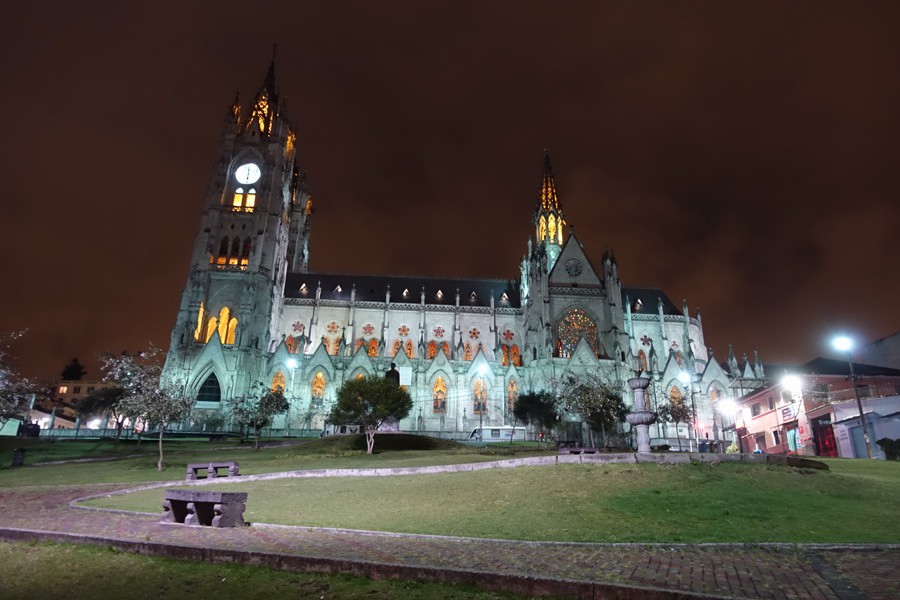
The basilica is an impressive edifice. You can get some nice views just walking around it.
Entry to the basilica is $2. There’s a $4 fee to climb the towers for an even better vantage point.
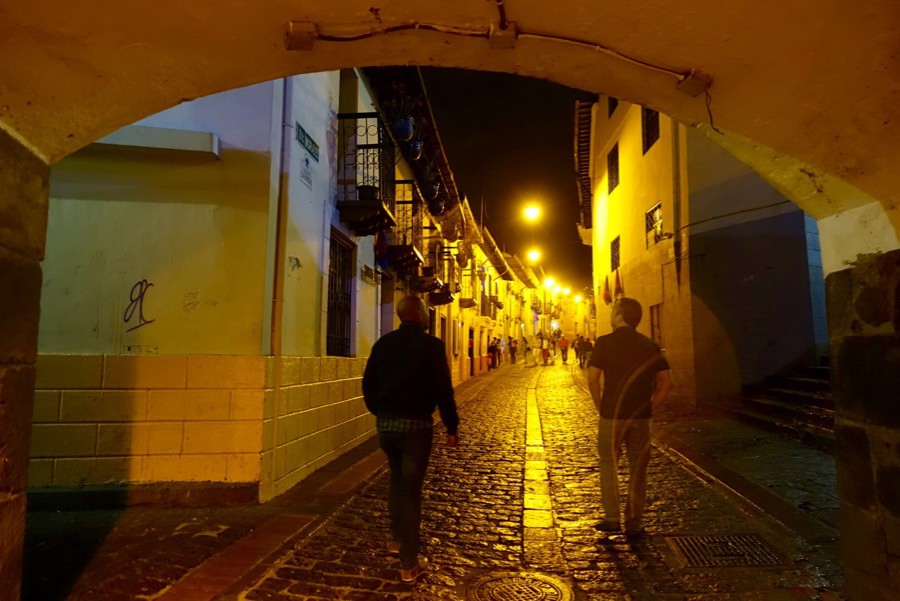
Calle la Ronda is a quaint, traditional street known for its bars and eateries. Open primarily on weekend evenings, it’s a place to try local foods (like empenada de viento), buy artisan crafts, and experience Quito’s bohemian culture.
Almuerzos (set lunch) in Quito
Although almuerzos (Spanish for “lunch” but referring particularly to a set menu-of-the-day) are widely available across Ecuador, we first stumbled upon it in Quito.
When I asked to see a menu, the chef rattled off a menu of the day which included soup, juice, a main entree, and a small dessert. When I asked the price, I wasn’t sure if I was translating the numbers correctly in my head.
Our three-course meal was indeed $2.50!
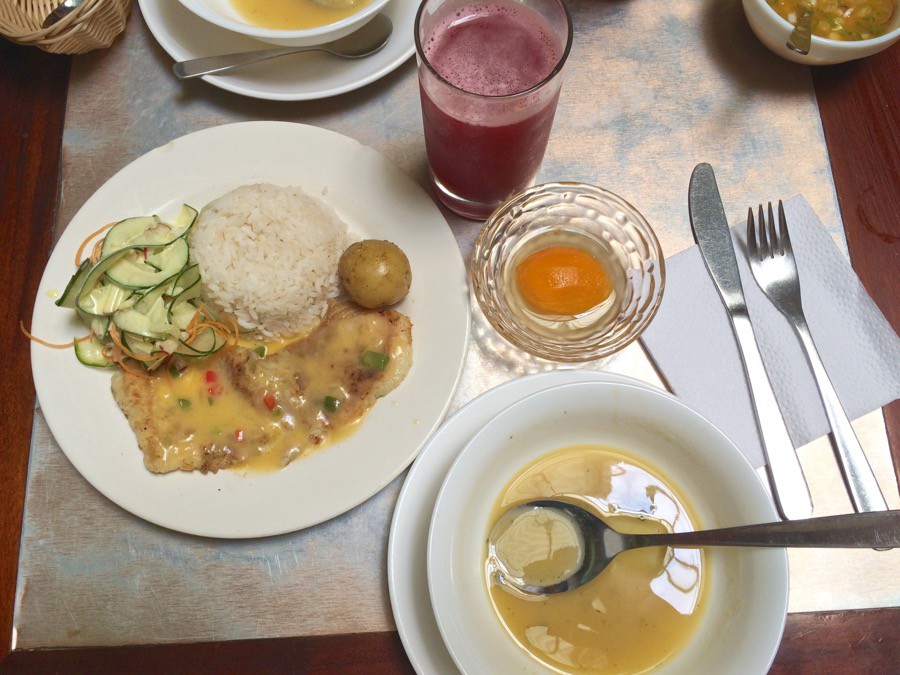
If you’re in Centro, we highly recommend El Terruno on Garcia Moreno, between Jose Mejia and Jose Olmedo streets, just two blocks from Plaza Grande.
They had two options for their daily soup and entree. The food was always great, staff was friendly, and the atmosphere is pretty cool too. We went back a number of times and though it always got packed, we never saw another tourist there.
In case you’re wondering, we had lunch out almost every day for seven weeks in Ecuador, and we never got sick.
The Equator: Intiñan and Mitad del Mundo
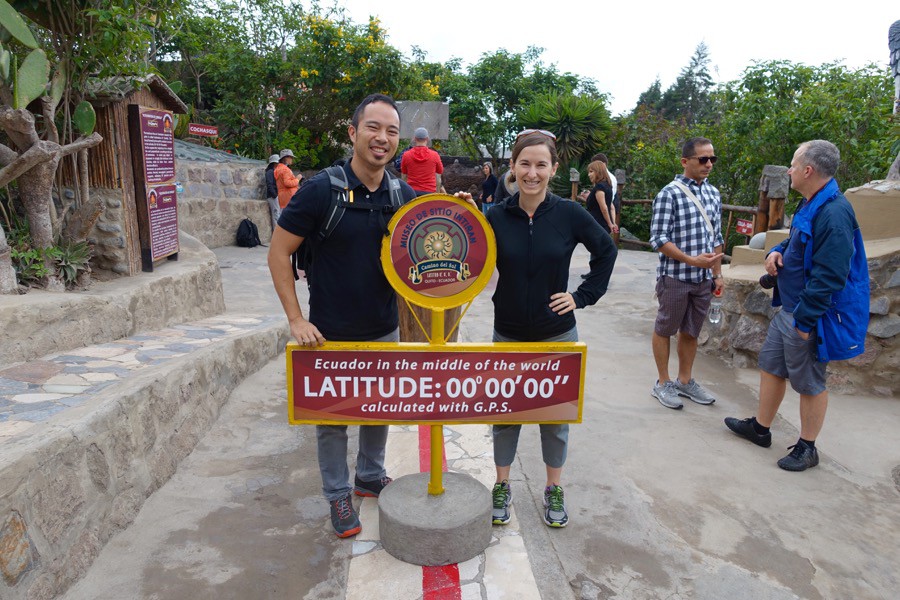
After exploring the historic center of Quito, I’d put a visit to the equator pretty high on your To Do list. It’s about 16 miles from Quito’s center, so reserve at least half a day for it, especially if you’re traveling by public transit.
There are actually two different monuments at Mitad del Mundo (Middle of the World). This is because the first latitude zero was calculated by European colonists using their tools of navigation, which ended up being a smidge off from the actual location of latitude zero, calculated more recently by GPS.
The larger and more obvious monument (the one that’s technically not on the equator) has a $5 entrance fee for adults, $2.50 for kids. It has a touristy feel as well as inflated tourist prices.
Entrance includes access to the giant monument, llamas, craft shops, a bull fighting ring (empty), and restaurants. You can also upgrade your ticket to gain access to museums and other activities on the property. 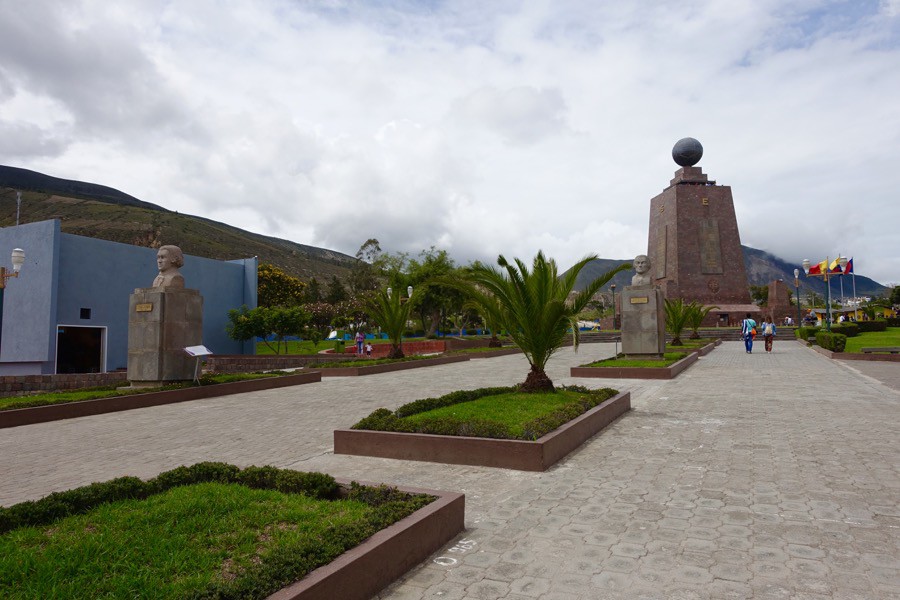
If you’re short on time and only want to see one monument/museum, most people (including me) would recommend Museo Intiñan next door.
The entrance is a little unassuming if you’re arriving on foot. Just continue along the main road, past the large parking lot for the other monument, and you’ll come across a long dirt road on your left with the museum sign (see below). Walk down the dirt road several hundred yards to the outdoor “museum.”
At Intiñan, you’ll get a 25-minute tour from a local guide, which is included in the $5 entrance fee. The tour walks you through aspects of Ecuador’s wildlife and native cultures, including replicas of tribal huts.
Then the guide will demonstrate some of the unique geological features of the equator as you’re standing at the exact location of latitude zero.
This is where you can see water swirling down a drain in opposite directions on different sides of the line. There are also some fun, interactive activities with balance that you can attempt.
We enjoyed it and felt like we learned quite a bit.
How to get to Mitad del Mundo by bus
Buses within the city of Quito are 25 cents per ride. From Quito, you’ll need to get yourself to La Ofelia bus station in the North. This can take about an hour from the center of town.
Once at La Ofelia, ask for the bus to Mitad del Mundo and wait in line if it hasn’t arrived. This bus is 40 cents and it’s a good idea to ask the bus staff to let you know where to get off, since the monuments are not at the end of the line.
On your way back to town, you should see a bus stop sign across the street from where you were let off. Wait there and check the front window of oncoming buses for an indication that it’s headed back to La Ofelia.
Don’t want to navigate public transit?
Visit Mitad del Mundo on this highly rated full-day Quito tour
Quito Markets
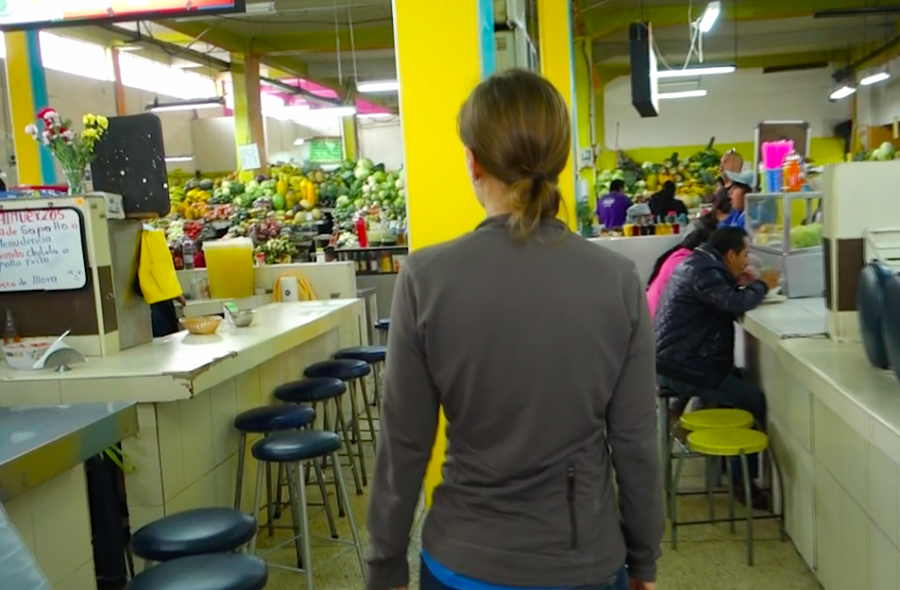
Quito is full of large markets of various kinds. It’s a great way to quickly immerse yourself in the local culture.
We took a walk through the closest one to where we were staying, a two-story indoor market for produce, household goods, and cookshop meals.
The most popular artisan market, according to TripAdvisor, is La Mariscal.
Sample local Ecuadorian food: What to eat in Quito
We mentioned almuerzos, but what specifically should you try to eat in Quito?
For starters, look for:
- ceviche (seafood and tomato)
- locro de papa (a traditional, savory potato-based soup with avocado)
- chifles (plantain chips)
- empenadas (savory stuffed pastry)
- fresh fruits like maracuya (passion fruit)
- cuy (a delicacy for the more adventurous: roast guinea pig)
- canelazo (a hot drink made with sugar cane alcohol, cinnamon, and sometimes fruit juice)
Where to Get a Good View in Quito
The hillside development in Quito is really a sight to behold. It’s pretty amazing that such a large city is planted in the midst of such a mountainous landscape. That’s why a bird’s eye view of Quito can be quite the sight.
We already mentioned the views that can be had at the Basilica.
Here are two more great spots for cityscapes:
La Virgen del Panecillo Overlook
We were lucky enough to get a ride up here with our hosts. We’ve heard the hike up is the not the safest area, so if you’re on your own, your best bet is a tour bus.
Perched high on a hill is El Panecillo, where a massive statue of the Virgin overlooks Quito. When it’s open, you can pay $2 to actually climb to the stop of the statue.
The views are fantastic, and there are little vendor booths where you can get your souvenirs, enjoy a meal, or warm up with a cup of hot canelazo.
Visit El Panecillo on a guided tour of Quito
Quito Teleferico
Although cloudy weather kept us from trying this tram, it was recommended to us by several people.
For $9 round trip, the teleferico takes you on a 10 minute ride to a nice look out above the city. You do gain over 1000 meters in elevation, so this may not be the best thing to do if you’re sensitive to the altitude.
Jardin Botanico de Quito
Photo credit: C T Johansson – CC BY-SA 3.0, Link
With a massive collection of South American plants, Japanese bonsai garden, roses, orchid greenhouses, Quito’s Botanical garden is a must for those who enjoy exploring the local flora and fauna of different types. And not to forget the beautiful butterfly garden.
You can visit on your own or opt for one of their guided visits. It’s easily accessible through taxi or a trolebus.
The entrance fees are pretty inexpensive- $3.50 for adults and $2 for children.
Plaza Foch
Plaza Foch is a vibrant neighborhood in the newer part of Quito with a lot of hostels, bars and restaurants.
You can find restaurants serving cuisines of many countries, and some trendy cafes in case you want to have a good cup of joe and access to WIFI. However, this place is best enjoyed after a long day of sightseeing. At night, the bars and clubs come into life.
Quito Tours to Try
Where to Stay in Quito
This a huge, spread-out city. If you’re here for a short time, I’d aim to stay close to the historic center.
If you are a budget traveler, you can stay in a hostel that offers rooms in $5–15 range. There are many hostels in the La Foch area as well as close to the historic center of Quito.
I would recommend La Foch for its more backpacker-friendly vibes and easy connectivity. Younger backpackers may like the lively La Mariscal area. A lot of the hostels also provide complimentary breakfast.
Masaya hostel and Hostal Vagabundo in Quito are two favorites of fellow contributor, Deb, who has stayed in both of them for quite a while.
For a luxury hotel perfectly located in the historic center, the lovely Casa El Eden hotel consistently earns rave reviews.
Check rates and availability for Casa El Eden Quito hotel >
Check rates and availability for Masay Hostel >
Check rates and availability for Hostal Vagabundo >
Our Top Tips for Intentional Travel in Quito Ecuador
- Try to make a local connection, whether it’s staying in a family homestay or hiring a local guide
- Shop at family owned, independent businesses and support local artisans when purchasing souvenirs
- Visit the historic during off-peak times, like early morning, to avoid crowds
- Take this article with you as your guide! Upload the article for free to your phone with the GPSmyCity app. (You can also upgrade to get an offline GPS map that guides you to each location we mention. Or subscribe to access all articles and maps for a full year.)
- For more guidance, see our simple rules for intentional travel series
- Protect your Quito trip with insurance ✈️ We’ve started using Nomad Insurance by Safety Wing for affordable evacuation, international medical, and trip coverage.
What travel restrictions and rules are in place in Ecuador?
Find post-pandemic travel updates for Ecuador here:
What you need to know about Ecuador travel right now
There are certainly more things to see and do in Quito, but these are the highlights from our personal experience. Have you been to Quito? We’d love to hear your recommendations in the comments below.
You might also like these other Ecuador travel destinations:
– 6 Beautiful Places to Visit in the Ecuadorian Andes
– What to See and Do in Cuenca, Ecuador (Plus Walking Tour Map)
– What to See and Do in Banos, Ecuador
– What to Do on a Day Trip to Otavalo, Ecuador
Like this post? Pin it for later or share with friends!

